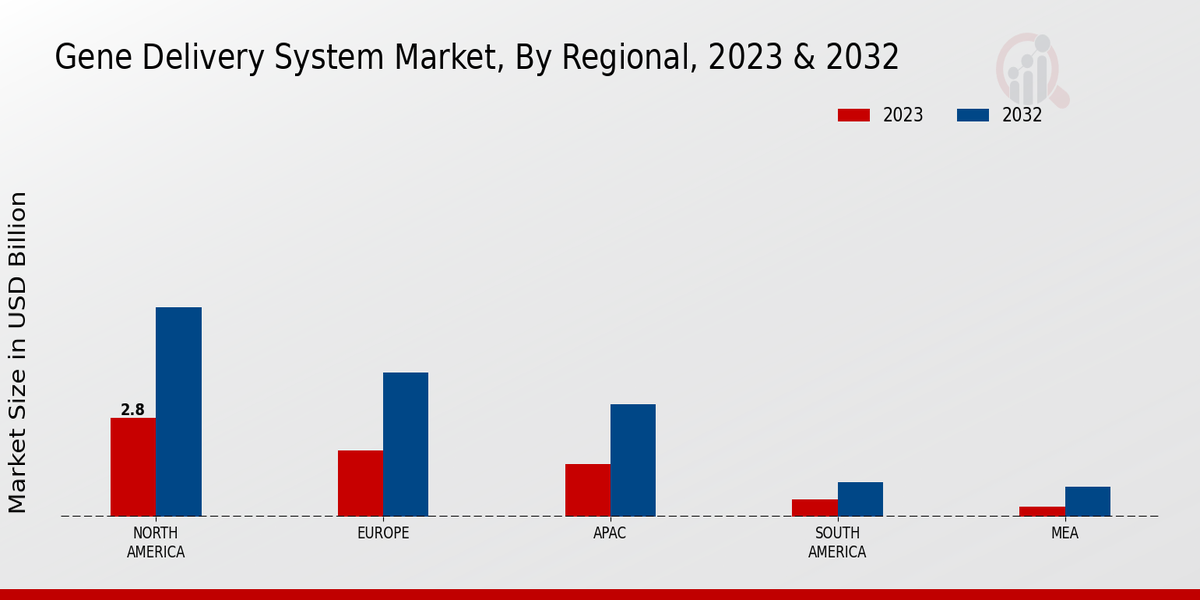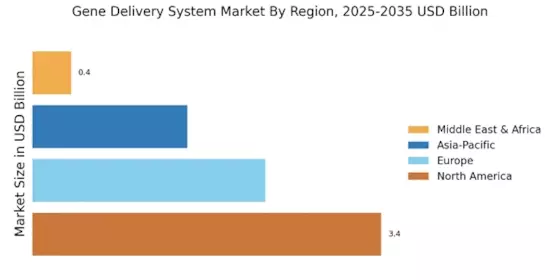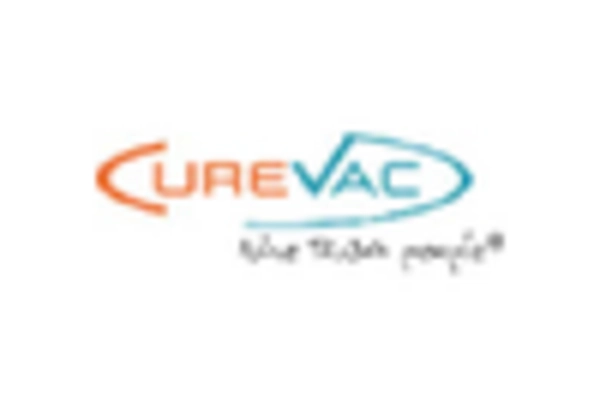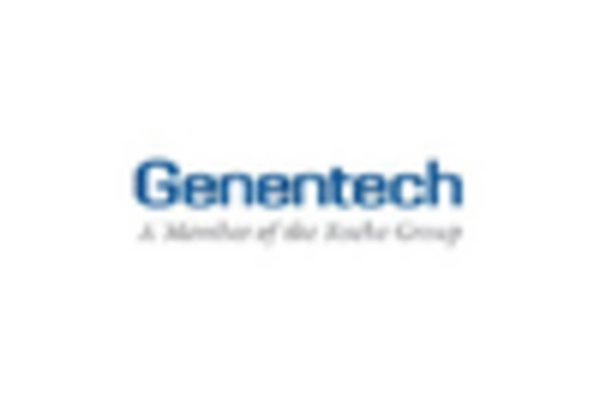Advancements in Biotechnology
Technological advancements in biotechnology are significantly influencing the Gene Delivery System Market. Innovations in vector design, such as the development of more efficient viral and non-viral delivery systems, are enhancing the precision and effectiveness of gene therapies. For instance, the emergence of adeno-associated viruses (AAVs) has shown promise in delivering therapeutic genes with minimal immune response. The Gene Delivery System Market is projected to reach USD 2.4 trillion by 2028, indicating a robust investment landscape that supports the evolution of gene delivery technologies. These advancements not only improve the safety profiles of gene therapies but also expand their applications across various therapeutic areas, including oncology and rare diseases. Consequently, the Gene Delivery System Market is likely to benefit from these technological breakthroughs, fostering a more dynamic and competitive environment.
Growing Demand for Targeted Therapies
The increasing demand for targeted therapies is a driving force behind the Gene Delivery System Market. As healthcare shifts towards personalized medicine, there is a growing emphasis on treatments that are tailored to individual patient profiles. Gene delivery systems play a crucial role in enabling targeted therapies, as they allow for the precise delivery of therapeutic genes to specific cells or tissues. This trend is particularly evident in oncology, where targeted gene therapies are being developed to address specific genetic mutations. The market for targeted therapies is projected to reach USD 100 billion by 2026, highlighting the substantial opportunity for gene delivery technologies. Consequently, the Gene Delivery System Market is poised for growth as it aligns with the broader movement towards personalized and targeted treatment approaches.
Regulatory Support for Gene Therapies
Regulatory bodies are increasingly providing support for the development and approval of gene therapies, which serves as a significant driver for the Gene Delivery System Market. Initiatives aimed at expediting the review process for innovative therapies are becoming more common, as regulators recognize the potential of gene-based treatments to address unmet medical needs. For instance, the FDA has introduced programs like the Breakthrough Therapy Designation, which facilitates faster access to promising gene therapies. This supportive regulatory environment encourages pharmaceutical companies to invest in gene delivery technologies, knowing that there is a pathway to market. As a result, the Gene Delivery System Market is likely to experience accelerated growth, as more therapies gain approval and enter the market, ultimately benefiting patients in need of advanced treatment options.
Rising Prevalence of Genetic Disorders
The increasing incidence of genetic disorders is a pivotal driver for the Gene Delivery System Market. As genetic diseases become more prevalent, the demand for effective gene therapies rises correspondingly. According to recent estimates, approximately 1 in 10 individuals is affected by a genetic disorder, which underscores the urgent need for innovative treatment solutions. This growing patient population propels research and development efforts in gene delivery technologies, as healthcare providers seek to address these complex conditions. Furthermore, advancements in gene editing techniques, such as CRISPR, are likely to enhance the efficacy of gene therapies, thereby expanding the market. The Gene Delivery System Market is thus positioned to experience substantial growth as stakeholders strive to meet the therapeutic needs of this expanding demographic.
Increased Investment in Gene Therapy Research
The surge in investment directed towards gene therapy research is a crucial driver for the Gene Delivery System Market. With venture capital funding and government grants on the rise, researchers are empowered to explore novel gene delivery mechanisms and therapeutic applications. In 2023, investments in gene therapy reached an estimated USD 10 billion, reflecting a growing confidence in the potential of gene-based treatments. This influx of capital facilitates the development of innovative delivery systems that can overcome existing challenges, such as targeted delivery and off-target effects. As more companies enter the gene therapy space, the competition is likely to spur further advancements in gene delivery technologies. Thus, the Gene Delivery System Market stands to gain from this trend, as increased funding accelerates the pace of research and development.



















Leave a Comment